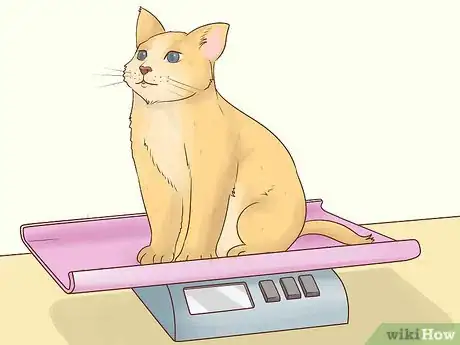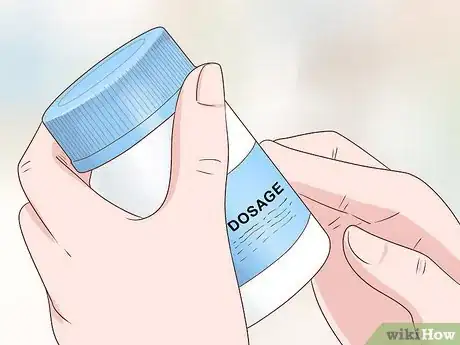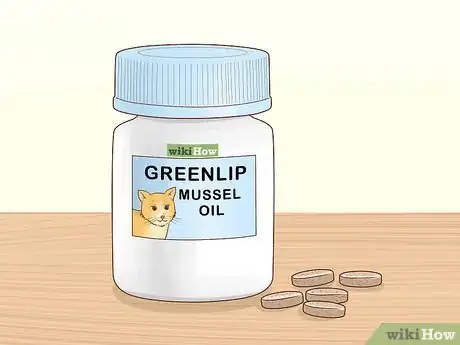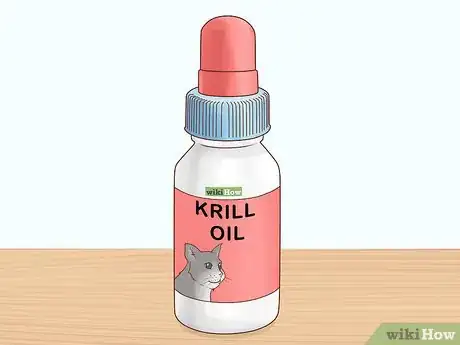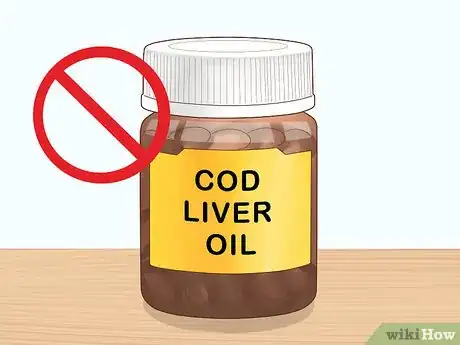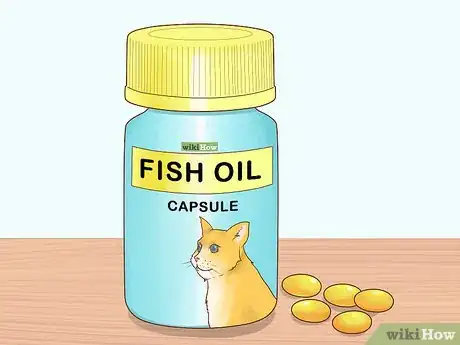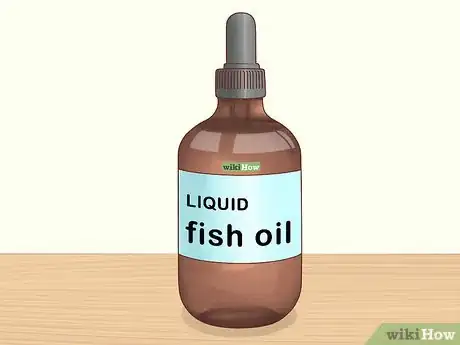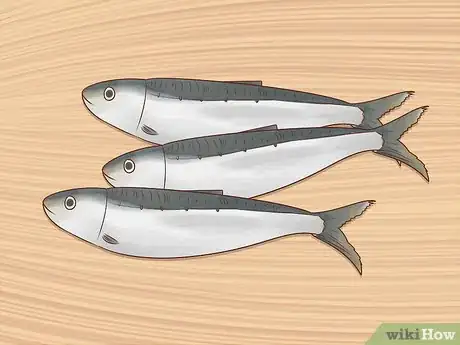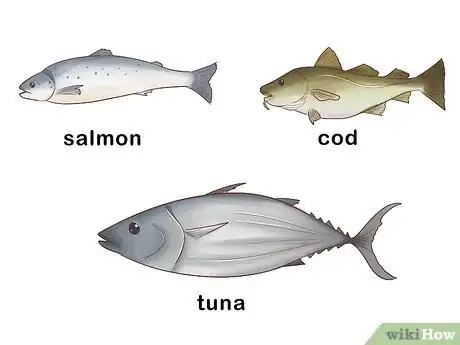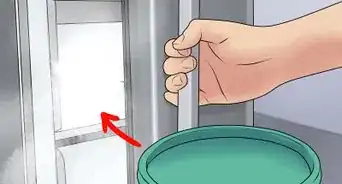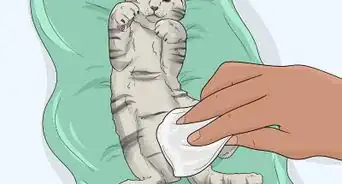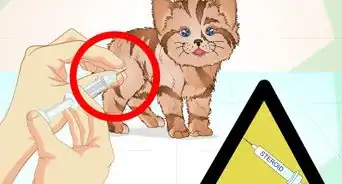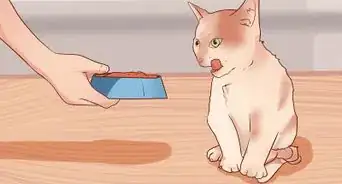This article was co-authored by Lauren Baker, DVM, PhD. Dr. Lauren Baker is a Veterinarian and Assistant Scientist at the University of Wisconsin-Madison. With over 10 years in veterinary medicine, she specializes in the concept of “one health,” which uses insights from veterinary medicine to help human medical research. She holds a Ph.D. in Comparative Biomedical Sciences, a Doctor of Veterinary Medicine, an MS in Comparative Biomedical Sciences, and a Bachelor’s degree in Psychology from the University of Wisconsin-Madison.
This article has been viewed 22,799 times.
Fatty acids, such as omega 6 and omega 3 fatty acids, are essential for cats and are not produced in the body. As a result, cats need to consume them through their diet. A proper diet that contains essential fatty acids can help a variety of conditions including, chronic kidney disease, arthritis, allergies, skin problems, and even cancer. Although fatty acids are present in commercial foods, the amount of omega 3 fatty acids should be supplemented. In order to ensure your cat gets enough fatty acids, you should provide your cat with supplements, determine the proper dosage, and then feed it to your cat in liquid or pill form.[1]
Steps
Determining the Proper Dosage
-
1Talk with your vet. Before adding fatty acid supplements to your cat’s diet, you should talk with your veterinarian about the proper dosage. Your vet will provide you with the correct dosage depending on your cat’s weight and food. They can also recommend a suitable supplement for your cat.
-
2Provide a dosage based on your cat’s weight. Fatty acids have plenty of benefits for your cat’s health. That being said, there are a few negative side effects that can result from giving your cat too much fish oil. For example, it can reduce blood clotting abilities. If your cat begins to experience diarrhea it is a sign that you are over dosing.Advertisement
-
3Determine the dosage based on the product guidelines. Each product will have different dosing requirements, so read the packaging carefully. If you change brands, even if it's the same type of supplement, reevaluate your cat's dosage using the new brand's guidelines to make sure that you're giving your cat the correct amount.
- It's best to ask your vet to help you determine the proper dosage. They will be able to help you make sure that you do not accidentally harm your pet.
Choosing a Supplement
-
1Consult your veterinarian. Fatty acid supplements are commonly used by veterinarians and their clients, and it is likely your veterinarian has a product that they know and trust. Fatty acid supplements can interact with some medications, and some cats should not have them. Always consult your veterinarian before starting your cat on a new supplement.
-
2Ask about greenlip mussel oil. Greenlip mussel oil is harvested from mussels and is a great source of omega 3 fatty acids for cats. They contain 33 fatty acids, five of which are essential omega 3 fatty acids. Greenlip mussel oil comes in a small, easily digestible tablet and does not have as strong of a flavor as other fish oils. As a result, it is much easier to feed to cats.[2]
-
3Suggest cat krill oil. Cats don't process omega 3s from plant based sources and as a result they need to be given animal sources of fatty acids. Some cats may also be allergic to fish and unable to get their essential oils through fish oils. If this is the case, try giving your cat krill oil. This is a great source of omega 3 fatty acid and comes in both capsule and liquid form.
- Be sure to always give fish oils that are made specifically for pets.
-
4Avoid cod liver oil. Cod liver oil, which is considered an excellent supplement for humans, should not be given to cats. This oil, although full of healthy omega 3 fatty acids, also contains high levels of vitamin A and D, which can be toxic to cats.[3]
Feeding Your Cat Fatty Acids
-
1Provide your cat with fish oil capsules. Some fatty acids can be given to your cat in the form of a capsule or pill. For example, Greenlip mussel oil comes in a small capsule that you can feed to your cat. Try hiding the pill in a treat so that your cat will easily take the pill.
-
2Give them liquid oils. You can also buy fish oils in liquid form. The best way to give liquid fish oil to your cat, is by putting a few drops on top of their food. This way they will consume the fatty acids while eating. Fish oil can have a strong smell and taste so it is best to start with a small dose and continue adding until your cat has become comfortable.
- You can also break open a capsule and squeeze the liquid onto their food.
-
3Read food labels. Some pet foods will list essential fatty acids in their ingredient list. Look for Omega 6 and Omega 3 fatty acids. That being said, due to the processing involved in making commercial pet foods, most of the nutritional value of the omega 3 fatty acids is lost during this process. As a result, it is still good to supplement omega 3 fatty acids in your cat’s diet.[4]
- Talk with your vet to determine the proper dosage for your cat.
-
4Try sardines. Sardines are an excellent source of omega 3 fatty acid and can be given to your cat as a treat. Unlike salmon, sardines do not live long enough to store toxins in their body, making them a great source of essential fatty acids. It is not as easy to determine the appropriate dosage when providing cats with fatty acids through fish.[5]
- Providing supplements is a much easier way to ensure that your cat is getting the proper dosage.
-
5Give your cat cold water fish. Fatty acids are readily available through a variety of cold water fish, such as salmon, cod, tuna, and sardines. You can try giving your cat water cold fish as a snack, to supplement their regular food.[6]
References
- ↑ http://www.littlebigcat.com/nutrition/choosing-an-omega-3-oil-for-your-pet/
- ↑ http://www.littlebigcat.com/nutrition/choosing-an-omega-3-oil-for-your-pet/
- ↑ http://www.littlebigcat.com/nutrition/choosing-an-omega-3-oil-for-your-pet/
- ↑ http://www.littlebigcat.com/nutrition/omega-3s-are-essential-for-your-cat/
- ↑ http://my-cat-furniture.com/can-cats-eat-sardines
- ↑ http://www.peteducation.com/article.cfm?c=1+1400&aid=665
About This Article
If your cat needs more fatty acids in its diet, have a talk with your vet to determine the best dosage based on your cat’s weight and current diet. The dosage might also vary depending on the product you choose, so consult the packaging to find out how much you need to give and how often. To ensure that your cat is getting fatty acids from a high-quality supplement, ask your vet to recommend a product. Some popular options include greenlip mussel oil and krill oil, but cod liver oil is not recommended for cats because of its high concentrations of vitamins D and A. For more tips from our Veterinary co-author, including how to feed fatty acids to your cat, read on!

